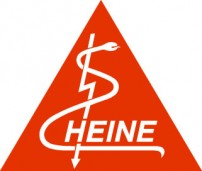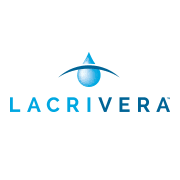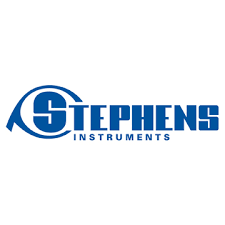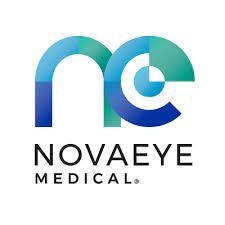Innovation is defined as the introduction of something new. Ophthalmology and its subspecialties have been at the forefront of medical innovation and have embraced the rapid advances in various technologies, including pharmacology, imaging, data processing, and devices. The year 2016 was no exception. Although the origins of many of these advances began earlier, this year saw them begin to take hold by ophthalmologists and other eye care professionals, with the ultimate goal of improving the quality of life for our patients.
A New Intraocular Lens
Technological advancements in multifocal intraocular lens (IOL) design have been made with the goal of improving both optical quality as well as the patient’s range of vision. Patients desire the ability to retain spectacle independence, even after cataract surgery. Even though early versions of the multifocal intraocular lens allowed improved vision at both distance and near, unwanted optical side effects included glare and halos, particularly at night. Careful patient selection and accurate biometry were needed to improve patient satisfaction with these lenses.
Over the past decade, IOL technology has moved from refractive technology to diffractive technology with apodization, resulting in less frequent and less intense visual side effects. Apodization improves image quality by optimizing the focus of light by distributing the appropriate amounts of light to near and distant focal points regardless of the lighting situation. Mechanically, apodization is accomplished by recontouring the “shoulders” or edges of the multifocal steps of the IOL. The net effect results in improved overall vision quality with a reduction in dependence on pupil size and lighting compared with earlier technologies. Besides the diffractive technology with apodization, use of aspheric lenses has improved spherical aberration. Inherent to the human eye is an average of approximately 27 µm of spherical aberration.
In July 2016, the US Food and Drug Administration (FDA) approved an achromatic Tecnis Symfony® IOL (Abbott Medical Optics, Inc; Santa Ana, California), the first “extended depth of focus” (EDOF) IOL to be available in the United States. This IOL is believed to be a game changer. The IOL has a diffractive step-like optic profile that is intended to provide extended range of vision while correcting chromatic aberrations for contrast sensitivity enhancement using proprietary technology.[1] Because diffractive optics may reduce contrast, the introduction of reduced chromatic aberration counterbalances the reduced contrast from diffractive optics, resulting in 20/20 vision even in suboptimal lighting conditions.
In one study that compared optical quality, contrast sensitivity, and quality of life, the achromatic IOL was found to have outcomes similar to those of an aspheric monofocal IOL.
An added benefit of the Symfony EDOF IOL is that it is currently available as a toric lens, meeting the needs of patients with significant astigmatism. This is the first lens available in the United States that combines toric with EDOF technology.
The introduction of EDOF technology will have a positive impact on the already largely successful outcomes seen in cataract surgery, providing additional options and also greater patient satisfaction due to improved quality and range of vision.
Advances in Glaucoma Surgery
In recent years, there has been much talk about new surgical advances in glaucoma surgery on the horizon.
The AqueSys® XEN Gel Stent (Allergan; Parsippany–Troy Hills, New Jersey) just received FDA approval for use in the United States.
The XEN Gel Stent is considered a hybrid between traditional glaucoma surgery and minimally invasive glaucoma surgery. It is implanted ab interno through a clear cornea incision but creates a bleb by shunting fluid from the anterior chamber to the subconjunctival space.
Another new device, the InnFocus MicroShunt™ (InnFocus, Inc; Miami, Florida), is currently in the final phase of an FDA randomized clinical study.
The InnFocus MicroShunt is a flexible tube made of a highly biocompatible biomaterial that is inert and thus evokes minimal inflammation and scar formation. This SIBS material that constitutes the stent has been used in drug-eluting stents and is proven to induce much less scarring. The device is 8.5 mm in length with a luminal diameter of 70 µm. It is inserted via an ab externo approach, through a small needle track, and does not require placement of a patch over the device. Thus far, the InnFocus MicroShunt appears promising and can be used for patients with mild to severe glaucoma.
Corneal Collagen Crosslinking
The process of infusing the corneal stroma with a photosensitizer (riboflavin) and irradiating the cornea with ultraviolet light in order to slow the progression of keratoconus was first reported in 2003. This process is now known as collagen crosslinking (CXL) and is approved by the FDA. CXL was subsequently approved by the FDA for the treatment of corneal ectasia after refractive surgery.
Although promising, potential issues with CXL include thinning of the corneal tissue, damage to the endothelial cells, and infection after the procedure. Little is known about the long-term effects of CXL, such as longevity of treatment and the need for repeat treatments.
The use of CXL for additional conditions includes the treatment of infectious keratitis as well as prophylactic CXL in combination with laser-assisted subepithelial keratomileusis (LASEK) for highly myopic patients, to enhance corneal stability and to reduce the possibility of posttreatment myopic shift and corneal ectatic disease.
Prevention of Myopia
Another idea that saw its origins years ago but was expanded upon in 2016 is the use of atropine in the treatment of myopia.
The effects of atropine on myopia have been the focus of several randomized clinical trials. Atropine eye drops have been shown to slow myopic progression in young children. The mechanism by which this occurs has not yet been determined, but theories include the inhibition of accommodation and scleral remodeling.
A randomized, double-masked clinical trial comparing the safety and efficacy of different concentrations of atropine eyedrops in controlling myopic progression was published in 2016. The investigators found that 0.01% was more effective in slowing myopic progression and was associated with fewer visual side effects compared with higher doses of atropine.
Heads-up Live Retina Surgery
Three-dimensional digital imaging for heads-up live retina surgery is an exciting advancement.
The benefits of heads-up retina surgery using a stereoscopic high-definition monitor instead of standard microscope oculars are many. Ergonomic benefits include the reduction of musculoskeletal problems that arise from sitting at the microscope, as well as decrease in surgeon fatigue. Additionally, everyone in the room can see exactly what the surgeon is seeing, which is helpful in teaching residents and fellows.
Concerns about lag time between the surgeon’s actual movement and what is seen on the screen have been minimized with technologic improvement. Future technology will focus on reducing microscopic illumination and the risk for phototoxicity during retinal surgery.
OCT Angiography
Optical coherence tomography (OCT) angiography, a technology that was first reported in 2006, really gained traction in 2016.
OCT angiography using a split-spectrum amplitude decorrelation angiography (SSADA) algorithm, developed by Jia and Huang, provides noninvasive, quantifiable three-dimensional maps of the retina and choroidal microvasculature. Its rapid, noninvasive nature and ability to visualize retinal and choroidal capillary networks as separate layers has produced an explosion in research exploring quantification of blood flow in a variety of lesions and the use of OCT angiography in such diseases as diabetes, age-related macular degeneration, central serous retinopathy, glaucoma, and optic nerve swelling.






















